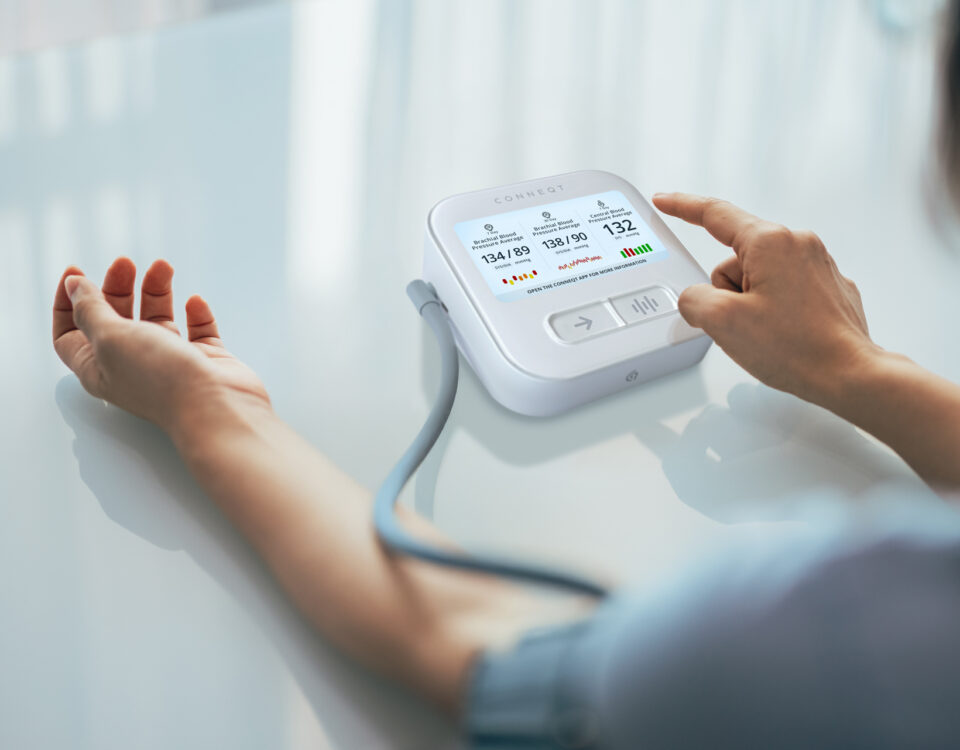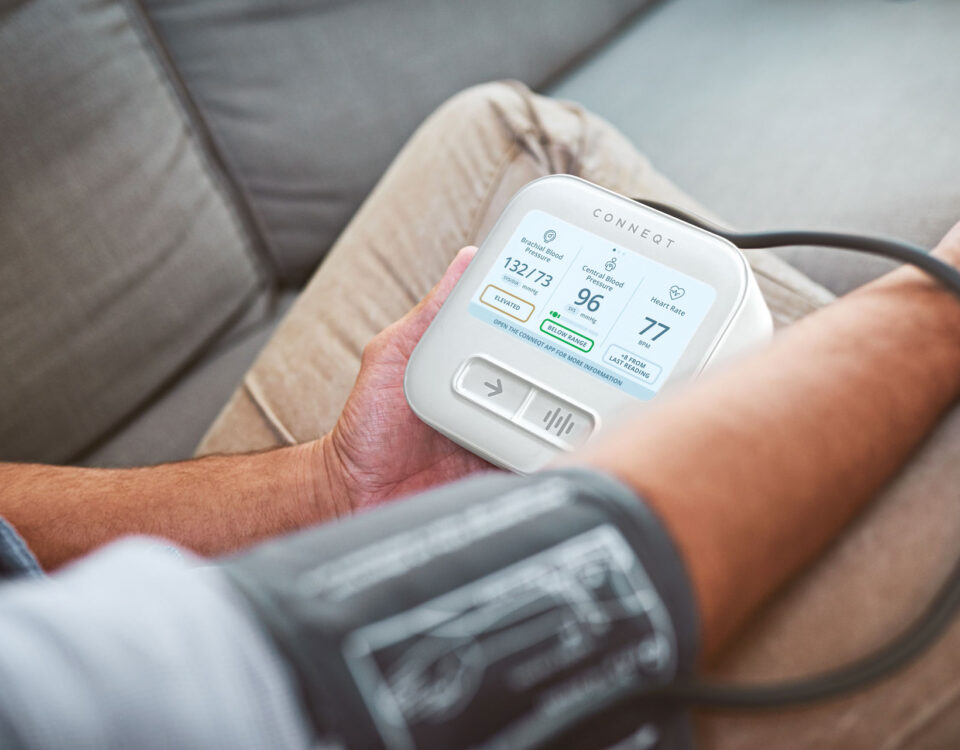When it comes to understanding your cardiovascular health, there’s more to the story than standard blood pressure readings. One key metric that provides deeper insight into arterial health is pulse pressure amplification (PPA). This vascular biomarker highlights how blood pressure changes as it moves through your arteries, offering a clearer picture of your heart and vascular system’s health.
But what exactly is PPA, and why should it matter to you? Let’s break it down.
What is Pulse Pressure Amplification?
Pulse pressure amplification refers to the difference between pulse pressure measured at the heart (central pulse pressure) and at the arm (brachial pulse pressure). Pulse pressure itself is the difference between systolic (the top number) and diastolic (the bottom number) blood pressures.
As blood travels away from the heart, arteries normally amplify this pressure difference due to their elasticity. This natural amplification reflects healthy, flexible arteries. However, when arteries stiffen—a hallmark of vascular aging and cardiovascular disease—this amplification diminishes.
Why is Pulse Pressure Amplification Important?
PPA gives a specific look at arterial health, offering insights that standard arm blood pressure readings alone can’t provide. Here are a few reasons why PPA matters:
- Central Blood Pressure Insights: Central blood pressure is more closely linked to cardiovascular events like heart attacks and strokes than brachial blood pressure. PPA bridges the gap between these two measurements, helping assess risk more accurately.
- A Marker of Arterial Stiffness: Reduced PPA is often a sign of stiff arteries, which can develop due to aging, high blood pressure, or other conditions like diabetes and obesity. A lower PPA when identified early can guide lifestyle changes or treatments that improve arterial health.
- Enhanced Cardiovascular Risk Profiling: PPA helps refine your cardiovascular risk. For example, two individuals with similar brachial blood pressure might have very different PPA values, suggesting differing levels of vascular health.
A recent study published in Nature highlights how reduced PPA of < 1.3 is associated with arterial stiffness and increased cardiovascular risk. By measuring PPA, this research provides a valuable tool for early detection of vascular changes.
Can You Improve Your Pulse Pressure Amplification?
Yes! While some changes in PPA are related to aging, many factors influencing it are modifiable. Here’s how you can support better arterial health and improve PPA:
- Regular Physical Activity: Exercise improves arterial flexibility, making it a powerful tool to boost PPA.
- Healthy Diet Choices: Foods rich in antioxidants and omega-3 fatty acids can reduce arterial stiffness.
- Blood Pressure Management: Keeping blood pressure in a healthy range supports better amplification.
- Proactive Monitoring: Devices like the CONNEQT Pulse allow you to track your PPA over time and adjust your health strategies accordingly.
Pulse pressure amplification is more than a number—it’s a vital vascular biomarker that sheds light on the health of your arteries and your overall cardiovascular system. By understanding and monitoring PPA, you gain an edge in managing your heart health and reducing your risk of future cardiovascular events.









